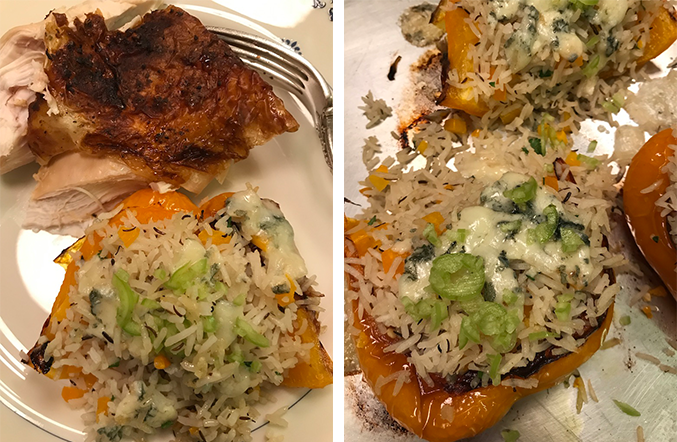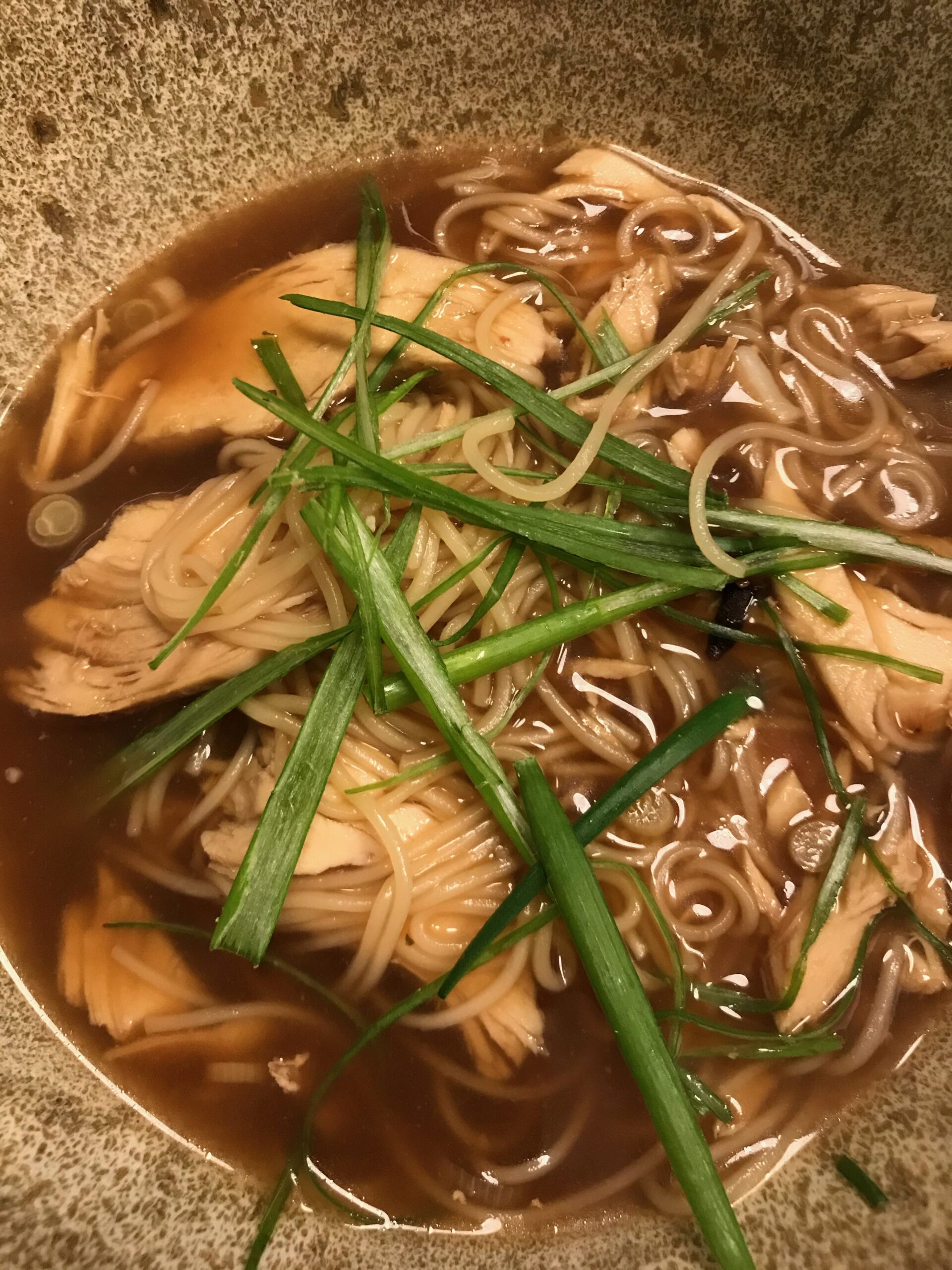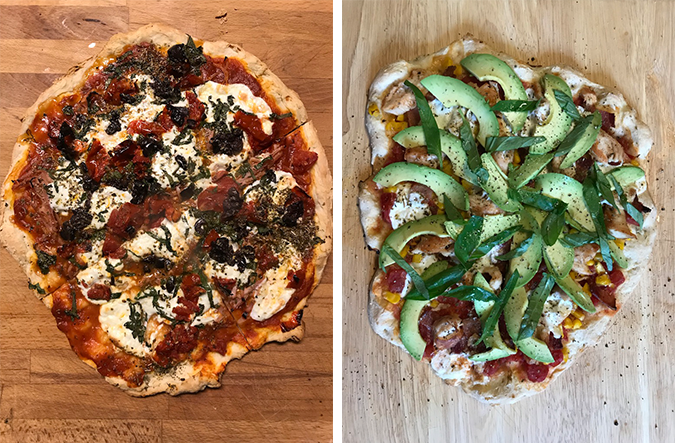 I am of the opinion that roasted chickens (also called rotisserie chickens) found in most grocery stores are excellent, flavorful, and rather inexpensive. Despite this, I understand that there is a desire to want to roast one’s own chicken and many other dishes (i.e. “making restaurant-quality waffles, pizza and bagels with the single touch of a button”)—especially after this year’s seasonal holiday promotion of Air Fryer Ovens. This appliance claims to replace your beloved countertop convection oven, designer toaster, pressure cooker, outdoor grill, microwave, and even your trusted conventional oven—the modern workhorse to bake and broil. What a shame about the latter, but perhaps it’s time to embrace a contemporary way of cooking since the “earliest ovens…date back to 29,000 BC.”
I am of the opinion that roasted chickens (also called rotisserie chickens) found in most grocery stores are excellent, flavorful, and rather inexpensive. Despite this, I understand that there is a desire to want to roast one’s own chicken and many other dishes (i.e. “making restaurant-quality waffles, pizza and bagels with the single touch of a button”)—especially after this year’s seasonal holiday promotion of Air Fryer Ovens. This appliance claims to replace your beloved countertop convection oven, designer toaster, pressure cooker, outdoor grill, microwave, and even your trusted conventional oven—the modern workhorse to bake and broil. What a shame about the latter, but perhaps it’s time to embrace a contemporary way of cooking since the “earliest ovens…date back to 29,000 BC.”
What about roast chicken?
In addition to the versatility of these sophisticated Air Fryer Ovens, they are aesthetically pleasing, and are compact and easy to set on any countertop; however, if you already own all of the above appliances why add this one? What are the selling points beyond newness and a recognizable brand? The air fryer ovens are hailed as a means to a healthier cooking style by famous chefs and culinary experts. Let’s be honest, Julia Child, James Beard, and Jacques Pepin among other culinary masters lent their names to cooking aids well before today’s QVC stars who claim that you can “now invite your chef into your kitchen.”
I will admit that I am old fashioned in my approach to roasting a chicken and haven’t been lured to owning an air fryer oven. My motto is: get it from the store and enjoy it while it’s hot and juicy. Given that, the real question is what to do with the leftovers? There are the countless typical staples to make chicken sandwiches, chicken croquettes, chicken salad, chicken tacos, and even the epitome of comfort food, chicken noodle soup.
While each dish is delicious, they all have a sense of déjà vu. They are a little bit too ‘leftover.’ I thought that I could build on those staples with the self-imposed requirement that each subsequent dish would use leftover chicken, knowing that each day the remaining pieces would be smaller and less than the ‘ideal’ breast. Here are five ways to use a roast chicken:
1. Chicken with rice
In this version, the roast chicken was used directly from the store. The question was not how to prepare it a different way, but simply finding an accompanying vegetable that would complement the chicken. I had on hand a perfectly beautiful orange sweet bell pepper, an Anaheim pepper (I favor them to poblano peppers as they are milder, yet give a nice zing to the dish), blue cheese, caraway seeds, and rice— in this case Basmati which I like for its aromatic quality.
While cooking the rice, I roasted the peppers with a little olive oil and kosher salt. When both the rice and the pepper were ready, I folded the blue cheese and caraway seeds into the rice then ‘stuffed’ the pepper. I then broiled the assembled pepper until the top was lightly brown. For the final touch I sprinkled thinly sliced Anaheim peppers on top. I had created a well-balanced meal, with a healthy protein, carbohydrates, and vegetable.
2. Asian Chicken Soup
Having discovered a basic Asian soup broth that I could vary through the use of a variety of proteins, I decided for my second day of roasted chicken, to slice the other chicken breast into quarter inch thick pieces and set them in the broth just before serving. I added fresh cut scallions and created an easy meal in less than 20 minutes.
3. Winter pasta with chicken
Now that I was left with smaller pieces of chicken, for my third iteration I needed to find another way of using the leftovers. Years ago, my goddaughter Zoe gave me a pasta recipe book. Many of the recipes caught my attention, especially those that—of course—included chicken. Unable to settle on a particular one, I combined several ingredients from two recipes that seemed fresh and spring-like. However, I wanted a winter flair and so made a light cream sauce from Dijon mustard and added that to select vegetables (thinly sliced celery, red onions, green and yellow zucchini) which I added to the leftover chicken, now cut into small pieces.
I used fettucine and the overall dish was flavorful. However, next time for the sake of maintaining the vibrancy of the yellow and green vegetables I will add a few uncooked zucchinis to the dish prior to service, which will give a nice crunch, also missed with this attempt. In addition, I forgot to add roasted walnuts which would have made it a real winter dish. As with many recipes, there is more than one iteration, so play around with the vegetables and flavors.
4. Pizza with barbecue chicken
I love making pizza—using ready-made pizza dough so it can be a spontaneous decision—and in looking for the next iteration of my roasted chicken leftover meals, I decided this was a good choice. Adding southern style barbecue sauce to the reheated smaller chicken pieces gave the pizza a little zing. The rest of the ingredients included various staples: tomato sauce or fresh sliced tomatoes, mozzarella di Buffalo (which is what lends a particularly moist and cheesy flavor without the strings associated with processed cheese), spinach if you have some available, and of course a sprinkle of Kosher salt and dried oregano.
When the pizza came out of the oven, I drizzled a little bit of barbecue sauce on top along with fresh cut basil leaves. In a subsequent version, I included a half avocado thinly sliced to give it a California flair, and devoured the slices in front of a Netflix film (i.e., Berlin Babylon).
5. Shepherd’s Pie with chicken
The final version was a little tricky, but so rewarding, because at this point in the chicken’s life, I needed to need to gather my courage and disassemble it to retrieve the remaining meat. You will be astonished how much meat we discard with the bones, especially dark pieces.
Having decided on a chicken shepherd’s pie, I made a simple cream sauce in which I sautéed garlic, diced carrots and orange bell pepper, fresh corn, and a thinly sliced celery stick. I added kosher salt, black pepper and nutmeg along with the chicken pieces. I set this mixture into an oven proof casserole dish– I prefer one with tall sides, but this is flexible. There are several ways to top the chicken and vegetable mixture.
The simplest is with cooked mashed potatoes. Recently I have enjoyed adding roasted potatoes on top of the mashed potatoes (twice baked potatoes) and then topping it all with diced red peppers. Alternatively, you may cover the dish with puff pastry, always adding some grated cheese on top. With the potato toppings the final step is a moment under the broiler to give a nice brown finish. The puff pastry will, of course, need to be cooked per the box time and temperature.
The versatility of a pot pie is endless and truly delectable if your imagination has no boundaries. In fact, instead of cooking variations on the above Shepherd’s Pie, I have enjoyed creating tarts with endless permutations. Just try any of them and you will be in heaven.
Bon Appetit!




